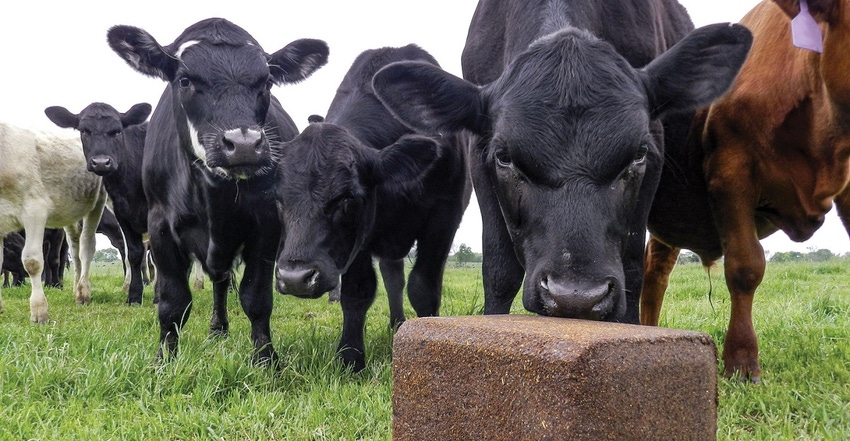The mineral supplementation predicament on pasture
Some research reports and economic hard times encourage producers to cut back on mineral supplements.

Mineral deficiencies are extremely common on pasture across the U.S., yet it's common for your clients to cut back on mineral when times get tough.
Further, the plethora of mineral supplements seem to muddy the waters for some beef producers.
A few months back the BEEF Vet story "Mineral supplement can have a big return on investment" explained diagnostic laboratory data from across the nation showed 60% or more of cattle may suffer copper deficiencies, another 10% to 70% can have selenium deficiencies depending on location, and problems with vitamins E and A and zinc can be quite common in drought situations or late in dormant-season pastures.
Recently, Britt Hicks, area extension livestock specialist for the Oklahoma Panhandle Research and Extension Center at Goodwell, Oklahoma, noted copper and zinc deficiencies are quite common in his region. He said among 1,113 forage samples collected over several years in Oklahoma and Texas only 14.6% provided adequate zinc and 39.4% were adequate in copper.
Yet at times the issue can appear confusing when looking at research trials. For example, a 2018 trial in Kansas examined providing stocker cattle on grass with salt blocks alone, or salt blocks with injectible multi-mineral supplement, or salt blocks with a Kansas State University complete mineral. The choice of salt blocks alone versus a combination of salt and mineral is common in the Kansas Flint Hills. The researchers found no difference in average daily gain between the three treatments.
The likely explanation is the cattle were in adequate supply of the major minerals that affect performance prior to this 90-day trial.
The relationship is a little more clear in a 2018 Nebraska trial examining the effects of injectible trace minerals (ITM) on artificial insemination success, researchers found cattle with adequate mineral status did not benefit from the injectible minerals administered at CIDR insertion, while those with inadequate mineral levels did benefit from the injectible minerals by showing an improved conception rate.
The Nebraska trial was a follow-up to previous studies showing mixed results. Conception to fixed-time AI was greater in ITM cows when compared with saline-treated cows (Mundell et al., 2012). A more recent study showed no differences in reproductive performance of feedlot-developed heifers given an ITM 30 days before the breeding season when adequate concentrations of trace mineral were provided in the diet (Willmore et al., 2015).
Ultimately, all the data shows the need for adequate mineral supplementation for all cattle, all the time, Hicks says. He adds that you should help your producers recognize the role minerals play in good health as well as in fertility and growth.
"Cutting minerals out of a feeding program may reduce cost in the short term but will reduce returns and effectively increase cost over the long term," Hicks says.
About the Author(s)
You May Also Like



